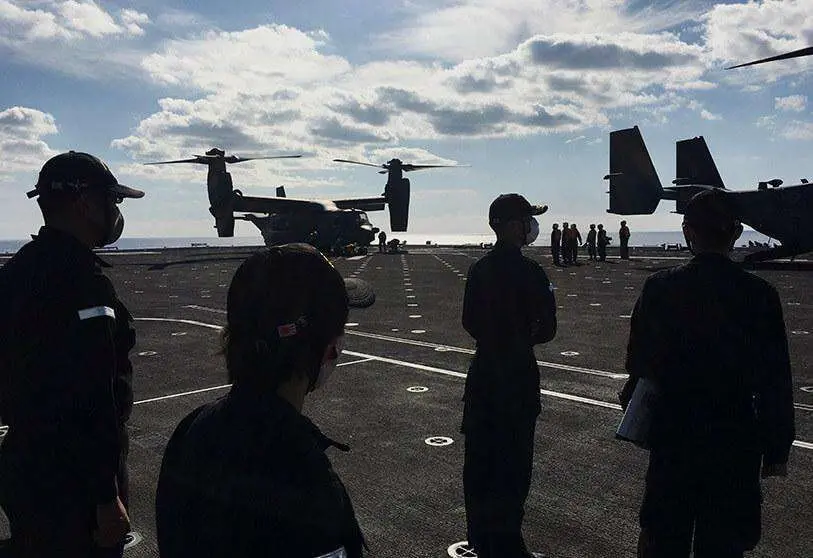Japan awakens its warrior instinct

It was the main objective of the assassinated former Prime Minister Shinzo Abe, perhaps Japan's most popular and beloved political leader since the great defeat in World War II and the imposition by US General MacArthur of a pacifist Constitution. Although the country was able to devote all its resources to rebuilding itself and become the world's second-largest economic power for several decades, Abe was aware that the military "protectorate" of the United States might no longer be enough to counter the growing threats posed by China and North Korea to the archipelago that was the cradle of the former Empire of the Rising Sun. That is why, in addition to establishing a new economic policy, Abenomics, he demanded support and permission in all international forums to transform his armed forces from merely defensive to capable of facing the challenges and provocations of Beijing and Pyongyang.
Abe has won a victory after his death, as his successor, the current Prime Minister Fumio Kishida, has approved the new national defence directive for the next five years, which doubles its budget (from 1 to 2% of GDP) and makes Japan the third largest arms spending power, immediately after the United States and China, and ahead of Saudi Arabia.
The decision, which requires a substantial amendment to the Constitution, article 9 of which expressly sanctions Japan's pacifism, has been accelerated in the wake of Russia's invasion of Ukraine. Since Putin initiated the aggression, Kishida has multiplied his calls, in all international forums, for Japan to be recognised as having the right to be able to defend itself effectively. He did so at the end of June in Madrid, the first time a Japanese Prime Minister had attended a NATO summit, and has since insisted on the same demand, with the mantra of "achieving a free and open Indo-Pacific region", exactly the same formula used by the US Secretaries of State and Defence to justify their presence in the entire western Pacific Rim to counter the threat from China.
The document made public by the Tokyo government explicitly mentions China as the cause of the tension in the area, not only because of its demand that Taiwan, its "rebel island", be brought back into the fold of Beijing's authority by hook or by crook, but also because of the direct conflict between China and Japan over the Senkaku Islands (called Diaoyu by the Chinese), an uninhabited archipelago located 1,900 kilometres from Tokyo, but of great strategic value because of its sovereignty over the surrounding waters. Currently held by Japan, China claims it as its own, as it does with other archipelagos in the South Sea, whose ownership is disputed with Vietnam and the Philippines.
The other major concern expressed in the document is North Korea, whose aggressiveness has been multiplied by the launching of ballistic missiles, which have either flown over Japan to demonstrate Pyongyang's alleged ability to reach the west coast of America, or have landed in Japanese waters off the Okinawa archipelago. Kim Jong-un boasts of being on his own, but in Japan he is seen as China's Doberman, who lets him off the leash from time to time to test the reactions of the US and its allies.
Despite the initial reluctance to Abe's plan, now endorsed by Kishida, practically the entire Japanese political spectrum seems to be aligned with the government. The main question for the opposition is how the 43 trillion yen (some 300 billion euros) that the investments outlined in the plan, aimed at increasing "counterattack capacity", will entail, will be financed. Whatever formulas are sought, but in the end it is clear that, one way or another, taxpayers will pay for it with more taxes or fewer benefits, or both, because they are not mutually exclusive.
Such a huge amount of money will be used to acquire US cruise missiles, in addition to developing hypersonic rocket programmes; Patriot air defence systems; boosting cyber defence programmes; and increasing manpower, currently 250,000 active soldiers and 60,000 in reserve. The planned 20,000 new warriors will be assigned primarily to the defence of cyberspace.
The Indo-Pacific is increasingly seen as the most likely flashpoint for the next major world conflict. Japan knows this and wants to free itself as soon as possible from the shackles that have prevented it from preparing to defend itself against what may come its way.

